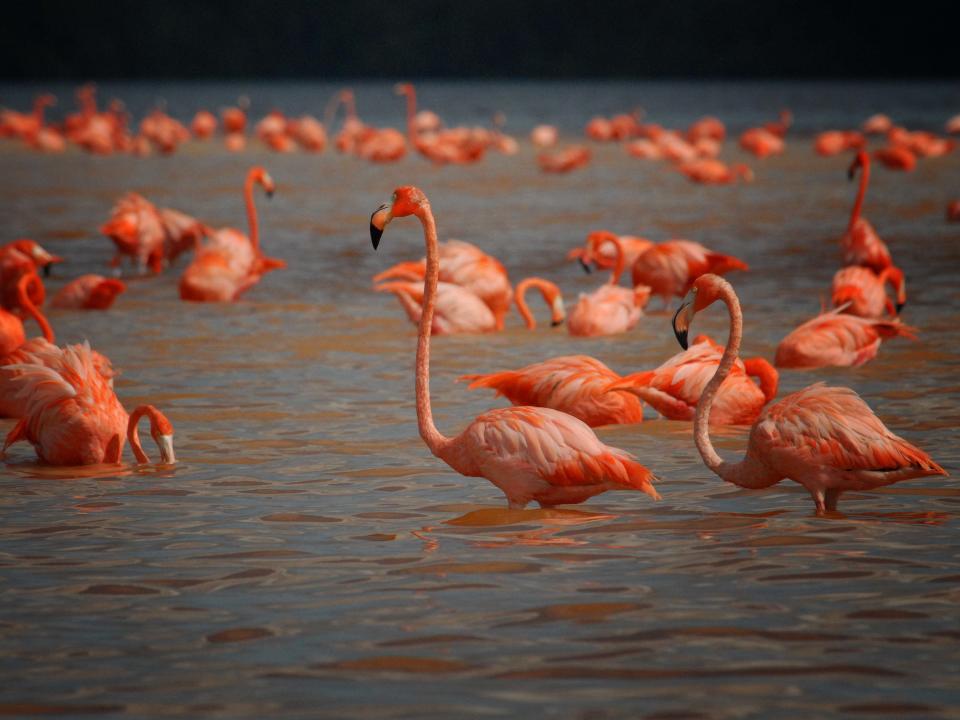Flamingos in Indiana? Here's how it happened earlier this month.
“Have you seen any good birds?” That’s a common greeting among birders, and lately there’s a good chance the answer is, “Oh, yes indeed.”
Think American flamingo, for instance. Here? Yes! And limpkins, roseate spoonbills, little blue herons, snowy egrets, great egrets, tri-colored herons, cattle egrets − all southern specialties.
What’s happened? Even national news commentators have talked about the unthinkable, that flamingos, rare even in southern Florida, have been sighted in most of the states between here and there. According to Greg Neise, webmaster for the American Birding Association and an administrator of its rare bird alert Facebook group, “It’s unprecedented to get this many flamingos in this many places” in the U.S.

Extremely tall birds, up to six feet, flamingos live primarily in the Caribbean and traditionally navigate across the Gulf of Mexico between Cuba and Mexico’s Yucatan Peninsula. But Hurricane Idalia paused to pack on winds in those waters. To avoid brutal hurricane winds, birds often try to fly around the storm, but sometimes get caught up in the outer rings. Bill Pranty, co-author of a 2007 research paper on flamingos, speculated that “as Idalia moved north from the Yucatan, the birds traveled into the U.S. in the storm’s counter-clockwise rain bands.”
Extraordinarily strong fliers with five-foot wingspans and strong muscles to support them, flamingos can easily fly 30-40 mph for long distances. Reaching Southern Indiana from the Gulf Coast would pose no problem. They just need to be home.
Sorenson: Are you killing owls without even knowing it?
But what about all those other birds, the spoonbills, egrets, and herons, those other southern birds? All were sighted here prior to Idalia. Most authorities chalk those sightings up to climate change.
After breeding season ends, many birds, including the aforementioned herons, egrets, and company, tend to participate in what ornithologists call dispersal. They wander. They explore new territory, looking for potential new feeding grounds, maybe new breeding grounds. As warm weather marches northward, and as previous “warm” becomes “hot,” these birds are searching to expand their ranges, perhaps into areas rich − maybe richer − in all that makes for successful breeding.
We have evidence of that behavior. About 10 years ago, the first black-bellied whistling ducks bobbed about in shallow water here. Now several pairs are documented annually breeding here. Should we expect the same with the other current rarities? Instead of rarities, will they become commonplace?
But back to the flamingos. Are they likely to stay? Come back to breed? Or even survive? Unlike the egrets, herons and company that came here under their own intentions, are the flamingos hopelessly lost and doomed to a dire end come winter?
Sorenson: How did cattle egrets get from Africa to the Evansville area?
Jerry Lorenz, director of research for the Florida Audubon Society, thinks these long-distance fliers will hang out and rest in their respective landing sites. After all, they’ve had a test of endurance and assuredly need sustenance. Then, Lorenz believes, the big birds will “probably aggregate back to Florida Bay and the Keys,” most likely moving from there to the Gulf waters in the Caribbean.
Photographers have captured images of banded flamingos whose bands have been traced to Mexico. One of the birds was banded in 2007, making it 26 years old. Imagine the stories it could tell its offspring about travels to a strange land with long, skinny bodies of water in a place humans call Indiana.
For more information about birds and bird habitat, see Sharon Sorenson’s books How Birds Behave, Birds in the Yard Month by Month, and Planting Native to Attract Birds to Your Yard. Follow daily bird activity on Facebook at SharonSorensonBirdLady, or email her at chshsoren@gmail.com.
This article originally appeared on Evansville Courier & Press: Flamingos in Indiana? Here's how it happened earlier this month.

